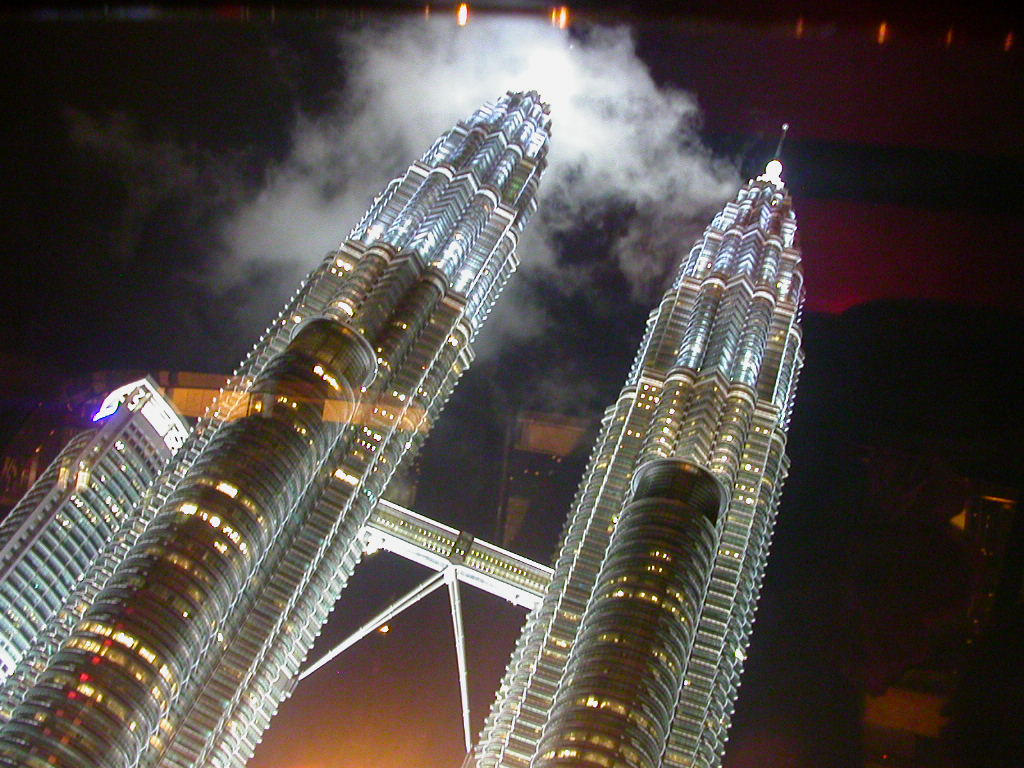



 Petronas Tower in Kuala Lumpur
Petronas Tower in Kuala LumpurThe PETRONAS Twin Towers was designed by Cesar Pelli & Associates (USA) in association with KLCC architects.
The tower's floor plate design is based on simple Islamic geometric forms of two interlocking squares creating a shape of eight-pointed stars. Upon the eight-pointed stars, are eight superimposed semi-circles softening the inner angles.
These semicircles are themselves anchored by the arcs of the main structural columns of the buildings. The semi-circles were superimposed in the inner angles of the interlocked squares to create more usable floor space.
The design details continued to dictate the way in which the buildings would rise in as graceful a fashion as possible. To maintain the vertical axis and tapering of the design, each tower is set back five times in its ascent.
Architecturally, these forms reflect the paramount Islamic principles of "unity within unity, harmony, stability and rationality."
At the uppermost floors, the walls are gently sloped inward to taper and contribute visually to the height and the elegant form of horizontal silver ribbons of stainless steel.
Every aspect of the design contributes to the audacious verticality of the Towers. The decision to symmetrically align the Twin Towers and connect them with a spanning bridge emphasised the classical nature of the architectural design.
The writings of Lao Tse, the ancient philosopher and founder of Taoism in China, tell that the reality of a hollow object is in the void and not in the walls. Cesar Pelli, architect of the Towers, has drawn upon the strength of the void between the buildings -- delineating an invisible axis of symmetry. For the architect, it is this void that gives the PETRONAS Twin Towers their sense of grandeur and unique identity.Read more in : http://theexcitingtraveldestinations.blogspot.com



No comments:
Post a Comment